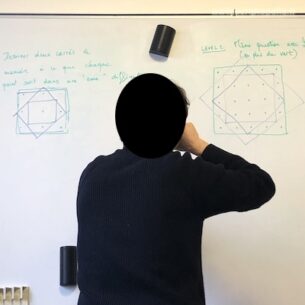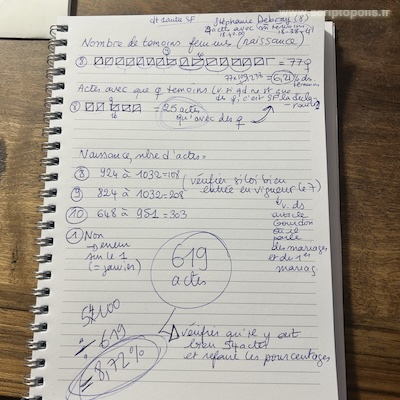Countings
Marseille, December 2024.
The researcher is sitting at her desk, reviewing the documents that interest her individually on the relevant electronic databases. On her screen are scanned documents, handwritten inscriptions, signatures, and multiple writings that only an informed eye can decode, then recode according to her interests.
On the desk, a notebook is designed to count using a base 5 system at the top, which is fast and reliable, and then to add up the figures based on these records in decimal form. Further down, the denominators are copied directly from the archive’s information systems, before the first ratios are roughly computed, for which she records the necessary subsequent verification… and the start of a dialogue with the existing literature with which she is already familiar.
While it follows the Latourian principle of inscription, this laboratory notebook may seem outdated. Today, firms sell electronic notebooks where everything is authenticated, traced, and assigned to perform reproducible science. Yet one last gesture brings them closer together: after the eye, the paper, and the pen, a snapshot taken on the telephone to keep and transport the trace of these counts, to make them part of a longer chain of proof workers.








@scripto Oh mais c'est des archives numérisées dont on parle. @jeromedenis a partir du site des Archives municipales ou départementales ? ça serait intéressant d'en savoir plus. #Archives